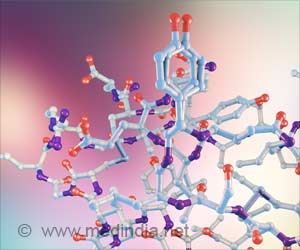Environmentally-friendly iron-based nanoparticle catalysts promise the synthesis of greener and cheaper drugs, say chemists.

The research, which was directed by Robert Morris, chair of the Department of Chemistry, involved several steps. Suspecting the existence of nanoparticles, the team first set out to identify the iron catalysts. They then conducted investigations using an electron microscope to confirm that the iron nanoparticles were actually being formed during catalysis. The next step was to ensure that the iron nanoparticles were the active catalytic agents. This was done with polymer and poisoning experiments which showed that only the iron atoms on the surface of a nanoparticle were active.
But a further challenge remained. "Catalysts, even cheap iron ones developed for these types of reaction, still suffer one major downfall," explained Sonnenberg. "They require a one-to-one ratio of very expensive organic ligands – the molecule that binds to the central metal atom of a chemical compound – to yield catalytic activity. Our discovery of functional surface nanoparticles opens the door to using much smaller ratios of these expensive compounds relative to the metal centres. This drastically reduces the overall cost of the transformations."
Source-Eurekalert










